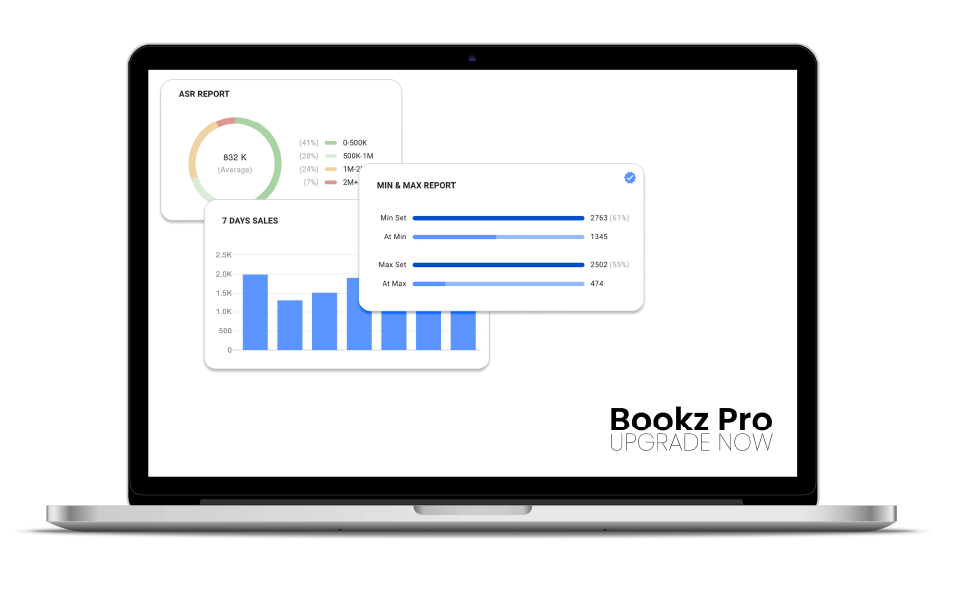5 Steps to Create a Smarter SKU System for Better Inventory Management

Introduction
Are you still using random SKU numbers for your inventory? If yes, you may miss opportunities to improve your operations and make smarter data-driven decisions. The SKU system is a better way of tracking stock and can enable sales potential, profitability, and business performance assessments.
The SKU System is a unique identifier for each product in your inventory. It efficiently tracks stock levels, sales, and product alternatives. It saves time and helps you understand well-received products and those that may need attention.
This blog takes steps to help you craft an innovative SKU system that will save you time, increase efficiency, and improve your bottom line.
Step 1: Understand Why Random SKUs Fall Short
In a seemingly straightforward manner, random SKU numbers for inventory tracking can inhibit the business’s growth potential due to considerable pitfalls. Randomly generated unique identifiers seem fine since every product has its identifier; they lack critical information needed for relevant inventory decisions.
Random SKUs conceal how long an item has been in stock, which makes inventory management inconvenient. They cause you to keep products that are not selling and consequently use up capital and storage space. Random SKUs do not provide production costs, sales data, or source details to track performance indicators and profit maximization.
Without a strategic SKU system in place, you are working blind. Using different reports or figuring things out by hand takes too much time and can lead to mistakes. Also, if your SKUs aren’t organized well, you’ll only notice problems after they cost you money.
Understanding the limitations of random SKUs should highlight the opportunities for innovation, leading to optimized inventory levels, proactive action, and simplified data-driven decisions.
Step 2: Include Key Data Points in Your SKUs
A more innovative SKU System means embedding meaningful information in each SKU. Unlike random numbers, your SKUs should be designed to communicate their meaning instantly. They should try to give a quick clue as to what is in the product. Here are four data points to include in your SKUs for effective inventory management:
1. Date Added: Monitor Inventory Age
Attributing the date the items were added to your inventory helps you judge their age. This is important when stock items have limited shelf life or seasonal demands because this information can be used to focus promotions or markdowns on older products to turn stale inventory and ensure proactive turnover.
2. Sales Rank: Predict Potential Sales
A sales rank SKU provides valuable information about its likelihood of selling, like whether or not books with lower Amazon rankings tend to sell faster. A product’s average sales rank can be embedded into the SKUs. By including this data in the SKUs, you can rapidly recognize items of high priority and adjust the pricing or restocking strategies accordingly. This kind of prioritization guarantees that the highest potential items are focused on. At the same time, slower-moving stock can be handled better.
3. Cost: Track Profit Margins
Tracking profit margins is a unique mode of profitability analysis in which each of your SKUs has its cost integrated. The relevant information allows you to check potential profit margins internally without having to look for separate records. Thus, transparency enables you to price items more effectively by allowing you to pivot quickly into determining whether a sale or discount is profitable.
4. Source: Evaluate Sourcing Effectiveness
Tracking where your product comes from thrift stores, bulk buys, or suppliers helps you assess the quality and profitability of each sourcing channel over time. You can focus on the channels that consistently provide high-demand, profitable products while moving away from those that don’t offer solid returns.
By including key data points in your SKUs, you elevate them beyond simple labels to powerful instruments for strategic decision-making. A well-designed SKU system keeps inventory organised and provides actionable insights for improving business. In the next step, we’ll discuss how to streamline this process using appropriate tools and technology.
All in One Software
for Book Sellers
Scout Better – List Faster – Reprice Smarter
Over 30% Business Growth
Achieved by Our Clients

Step 3: Leverage the Right Tools for Efficiency
A system for managing SKUs does not need to take a long time to build or be very complicated to implement if the right tools are used, instead of manually creating and managing SKUs, a software that specializes in managing them quickly and accurately can speed up the process and ensure better results.
SKUs and inventory management can be easily done using Bookz Pro, which is a great example of having the right tool in this area. Its efficient listing software allows users to input key fields like date added, sales rank, cost, and source into their SKUs for fast listing management. The software runs in real-time on the standard inventory management system to obtain performance analysis and optimize workflow efficiency.
Bookz Pro saves time by automating repetitive tasks and centralizing essential inventory tools like database scouting, repricing, and analysis into one central platform. This can provide you with a more powerful SKU system that supports smart decision-making and can also save you time.
Step 4: Streamline Your Workflow with the Right Tools
Improving your workflow using the right tools is the key to managing inventory efficiently and effectively. Instead of managing multiple platforms or resorting to manual processes, an all-in-one solution can simplify operations while providing seamless management.
Bookz Pro is an ideal example of an application designed to simplify and enhance the way you work using features such as:
- Fast Listing Software: Create SKUs quickly by populating them with all essential details.
- Comprehensive Inventory Management: Keep track of inventory age, sales rank, and profitability without difficulty.
- Database Scouting and Repricing: Seek out superior products while remaining cost-efficient.
What sets Bookz Pro apart is its user-friendly interface and exceptional support, including direct phone assistance and personalized Zoom training. Bookz Pro brings all these various tools into one platform, automatically saving you time and costs that can be utilized in business enhancement.
The proper tools will streamline your workflow and convert the SKU system into a truly great asset for staying organized, making informed decisions based on data, and scaling inventory management.
Step 5: Put Your Smarter SKU System into Action
To implement your new SKU system and capitalize on its inventory management improvement, we suggest applying new SKUs first to all newly acquired inventory before gradually reworking older inventory. Utilize tools such as Bookz Pro for more straightforward implementation and to ensure consistent scaling outcomes.
Once implemented, you’ll quickly notice immediate improvements:
- Improved Decision-Making: Quickly identify slow-moving inventory, profitable sources, and high-priority items for faster decision-making.
- Streamline Operations: Spend less time looking for data and more time optimizing business strategies.
- Increased Profits: You can focus on procuring items with higher margins for maximum profitability by tracking costs and sales trends.
Implementing this more innovative SKU system can help you create an organized, data-driven workflow. Over time, these minor adjustments will snowball into greater efficiency, higher profits, and increased confidence in decision-making. Start implementing now to see how your inventory system transforms your business!
Simplify Your Inventory with Bookz Pro’s Smarter SKU System

Amazon Book Reselling Blueprint
Read now, explore our full guide. Your revolution starts here. Subscribe to get the blueprint!
Bookz Pro makes it simple and efficient to create smarter SKUs that include key data such as inventory age, sales rank, cost, and source. This helps you make faster and more informed decisions about inventory management.
It provides everything you need to streamline your workflow and increase profits, from fast listing software and advanced repricing tools to an all-in-one inventory management system.
Take the guesswork out of managing your inventory–try Bookz Pro now and experience firsthand how smarter SKUs can make a difference!
Conclusion
Innovative SKU management can be chosen as a growth tactic and a tool for efficiency by going a step ahead of inventory organization. Furthermore, by including the key information for decision-making on inventory age, sales rank, cost, and source in the metadata field of each SKU, you can turn SKUs into tools that enhance profitability. The tools in Bookz Pro will give you an advantage by streamlining workflow to save time for other productive alternatives and provide insight into practical business operations that generate profit.
Start building a more intelligent system today using tools such as Bookz Pro to implement it and see your inventory management become an asset to your business. You should now seize control of your inventory!
Frequently Asked Questions
An SKU system refers to a system in which these identifications are used by companies so that they can have a good handle on their items in the inventory to keep an eye on stock levels, sales performance, and profitability. Firms monitor their stock levels, sales volume, and profit according to these numbers, which describe something significant about an item.
While setting up an SKU system, provide a format with essential product information, such as product type, size, color, etc. This format should remain the same for every product, allowing easy tracking and organization.
Specify data points to include in your SKU establishment (e.g., date added, sales rank, cost, etc.). It is important to use inventory management software or spreadsheets to assign SKUs to products. Moreover, the system must remain truly scalable and match up with other tools.
Include key data such as:
Date Added (for tracking inventory age)
Sales Rank (for predicting sales potential)
Cost (for calculating profit margins)
Source (for evaluating sourcing effectiveness)
By tracking inventory age, sales performance, and product turnover, SKU systems help identify slow-moving items quickly so you can take proactive measures to reduce excess stock and optimize inventory levels.



